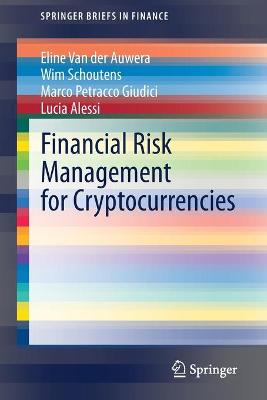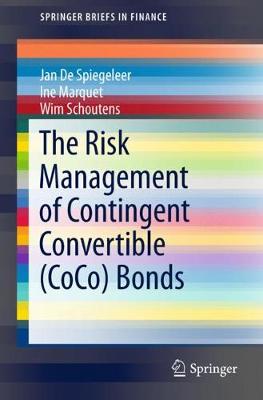SpringerBriefs in Finance
3 total works
Quantitative Assessment of Securitisation Deals
by Francesca Campolongo, Henrik Joensson, and Wim Schoutens
Financial Risk Management for Cryptocurrencies
by Eline Van der Auwera, Wim Schoutens, Marco Petracco Giudici, and Lucia Alessi
Providing insights into the analysis and management of cryptocurrencies, and serving as a starting point for a more in-depth risk analysis, this book will appeal to professionals and researchers interested in familiarizing themselves with the risks in cryptocurrencies, including academics, portfolio managers, risk-managers, quants, financial professionals, regulators, economists, asset managers and traders.
The Risk Management of Contingent Convertible (CoCo) Bonds
by Jan De Spiegeleer, Ine Marquet, and Wim Schoutens
This book provides an overview of the risk components of CoCo bonds. CoCos are hybrid financial instruments that convert into equity or suffer a write-down of the face value upon the appearance of a trigger event. The loss-absorption mechanism is automatically enforced either via the breaching of a particular accounting ratio, typically in terms of the Common Equity Tier 1 (CET1) ratio, or via a regulatory trigger.
CoCos are non-standardised instruments with different loss-absorption and trigger mechanisms. They might also contain additional features such as the cancellation of coupon payments.
Different pricing models are discussed in detail. These models use market data such as share prices, CDS levels and implied volatility in order to calculate the theoretical price of a CoCo bond and its sensitivities, providing the investor with insides to hedge from adverse changes in the market conditions.
The audience are professionals as well as academics who want to learn how to risk manage CoCo bonds using cutting edge techniques as well as all the risk involved in CoCo bonds.


